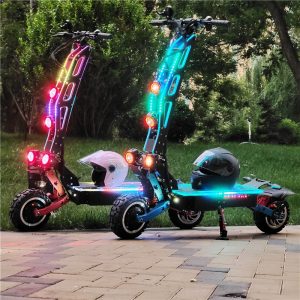Electric scooters: an innovative force reshaping urban transportation
In today’s urban life, electric scooters are quickly becoming a new choice for people to travel. With their unique flexibility, convenience, and small impact on the environment, they have gradually become an important part of urban transportation. This article will delve into the history of electric scooters, how they work, their benefits, and the challenges they face.
The history of electric scooters
The origins of electric scooters can be traced back to the 1960s, when many young people in ** started converting their bicycles to electric drive. However, the real revolutionary change occurred in the early 2000s, when advances in battery technology made electric scooters a viable form of transportation. Since then, sales of e-scooters have soared, especially in urban areas, where they have become the first choice for short trips.
How electric scooters work
At the heart of an electric scooter is a rechargeable lithium-ion battery that powers the scooter. By operating a handle, the user can control the motor’s speed and direction. Some high-end electric scooters are also equipped with navigation systems, which can provide real-time route guidance through mobile applications.
Advantages of electric scooters
Electric scooters have many advantages. Firstly, they are great for short trips, allowing users to quickly traverse city streets. Secondly, electric scooters are very energy efficient, making them cheaper to run than cars or bikes. Additionally, electric scooters have a smaller impact on the environment as they do not emit harmful gases. Finally, electric scooters are a very convenient means of transportation, and users can easily park and use them at public transportation stops or parking lots.
Challenges facing electric scooters
While electric scooters have many advantages, they also come with some challenges. First, due to the emergence of electric scooters, city managers are faced with the problem of how to manage and regulate this new mode of transportation. Secondly, the safety of electric scooters is an important concern. Although most electric scooters have some safety features, such as braking systems and lighting, there are still some accidents caused by improper use by users. Finally, the noise problem of electric scooters is also a problem that needs to be solved. While many manufacturers have begun to adopt silent technology to reduce the noise of e-scooters, their noise can still cause unnecessary distress on busy city streets.
future outlook
Despite some challenges, the future of e-scooters remains bright. As technology continues to develop, we can expect more innovations to appear on the market, such as more efficient battery technology, safer control systems, and a more comfortable ride experience. At the same time, as cities’ demand for sustainable transportation increases, electric scooters are expected to play a more important role in future urban transportation. Not only that, electric scooters are also opening up new markets, such as commercial transportation and cargo transportation. It can be seen that electric scooters are not only an ideal choice for short-distance travel, but also an important trend in future urban transportation.
in conclusion
The emergence of electric scooters undoubtedly brings a new possibility to urban transportation. They provide a fast, environmentally friendly and convenient way to travel, and are an ideal choice especially for short-distance travel. However, at the same time, we also need to pay attention to the challenges they face, such as safety, management and noise issues. Only in this way can we fully exploit the potential of e-scooters and make them truly a force for sustainable urban transportation.




